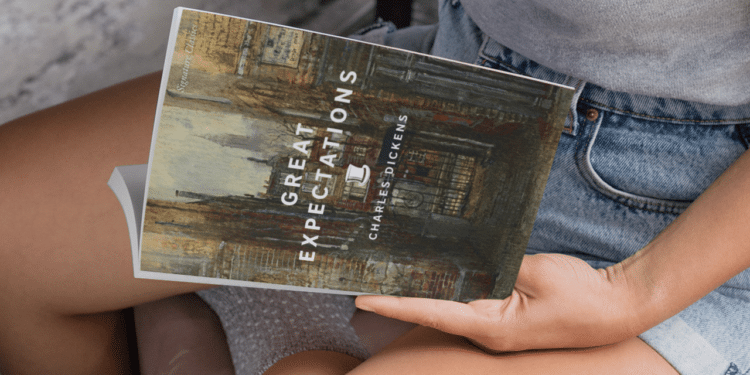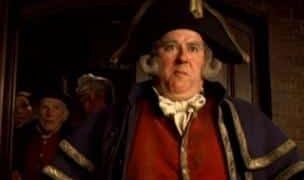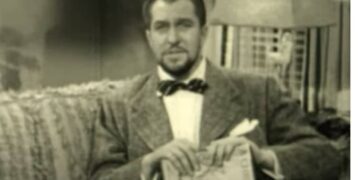From movies to television shows to music, Dickens’s themes, characters, and stories continue to captivate audiences worldwide. In this article, I’ll take you on a journey through the life and works of Charles Dickens, exploring his influence on pop culture and why his legacy endures.
Charles Dickens’s Biography
Charles Dickens was born in Portsmouth, England, in 1812. He was the second of eight children and grew up in a family that struggled financially. His father was a clerk in the navy pay office, and his mother was a homemaker. When Dickens was just twelve years old, his father was sent to debtor’s prison, and the young Charles was forced to leave school and work in a factory to help support his family.
Despite these early hardships, Dickens was determined to become a writer. He began his career as a journalist and soon began publishing his own stories and novels. His first book, “The Pickwick Papers,” was a huge success, and he went on to write some of the most beloved works of English literature, including “Oliver Twist,” “A Tale of Two Cities,” and “Great Expectations.”
Dickens’s Love Life and Friendships
Throughout his life, Dickens had a complicated love life and many close friendships. He married Catherine Hogarth in 1836, and they had ten children together. However, their marriage was not a happy one, and they eventually separated in 1858.
Dickens had many close friends, including the writer Wilkie Collins and the illustrator George Cruikshank. He also had a long-standing friendship with the actress Ellen Ternan, which has been the subject of much speculation and debate among scholars.
Life Outside Writing: Dickens’s Travels and Charitable Works
Despite his busy writing career, Dickens also found time to travel extensively and engage in charitable works. He made several trips to America, where he gave lectures on the abolition of slavery and was received as a celebrity. He also visited Italy and Switzerland, where he wrote some of his most famous works.
In addition to his travels, Dickens was deeply involved in charitable works. He supported many causes, including education for the poor and the rehabilitation of prostitutes. He also founded and edited a magazine called “Household Words,” which aimed to educate and entertain the working class.
Dickens’s Criticism of Society: Backbiting and Gossip
One of the hallmarks of Dickens’s writing is his criticism of society and its flaws. He was particularly critical of backbiting and gossip, which he saw as destructive forces that could tear apart communities and ruin lives.
In his novel “Bleak House,” for example, Dickens skewers the legal system and its obsession with procedure, which he saw as a barrier to justice. In “Martin Chuzzlewit,” he satirizes the greed and corruption of American society. And in “Little Dorrit,” he criticizes the hypocrisy of Victorian society and its treatment of the poor.
Themes in Dickens’s Writing: Rich or Poor, Life is Still Life
Despite his criticisms, Dickens’s writing is ultimately about the human experience and the struggles we all face. His works are filled with themes of love, loss, hope, and redemption, and his characters are often complex and multi-dimensional.
One of the recurring themes in his writing is the idea that no matter how rich or poor we are, life is still life. We all face challenges and hardships, and we all have the capacity for greatness. This message has resonated with generations of readers and continues to inspire us today.
The Best Quotes from Dickens’s Works
It’s hard to choose just a few, but here are some of my favorite quotes from Charles Dickens’s works:
- “It was the best of times, it was the worst of times.” – A Tale of Two Cities
- “Please, sir, I want some more.” – Oliver Twist
- “It is a far, far better thing that I do, than I have ever done; it is a far, far better rest that I go to than I have ever known.” – A Tale of Two Cities
- “There are dark shadows on the earth, but its lights are stronger in the contrast.” – The Pickwick Papers
The First and Last Books of Dickens: A Comparison
It’s interesting to compare Dickens’s first and last books and see how his writing style and themes evolved over the course of his career. “The Pickwick Papers,” published in 1836, is a lighthearted and humorous novel about a group of travelers in England. In contrast, “The Mystery of Edwin Drood,” published in 1870, is a dark and brooding mystery that was left unfinished at the time of Dickens’s death.
Despite the differences between these two books, they both showcase Dickens’s incredible talent for storytelling and his ability to create memorable characters.
Books in Order: The Complete List of Dickens’s Works
If you’re a fan of Charles Dickens, you might want to read his books in order. Here’s a complete list of his works, in the order they were published:
- The Pickwick Papers (1836)
- Oliver Twist (1837-1839)
- Nicholas Nickleby (1838-1839)
- The Old Curiosity Shop (1840-1841)
- Barnaby Rudge (1841)
- Martin Chuzzlewit (1843-1844)
- Dombey and Son (1846-1848)
- David Copperfield (1849-1850)
- Bleak House (1852-1853)
- Hard Times (1854)
- Little Dorrit (1855-1857)
- A Tale of Two Cities (1859)
- Great Expectations (1860-1861)
- Our Mutual Friend (1864-1865)
- The Mystery of Edwin Drood (1870, unfinished)
Dickens’s Influence on Pop Culture: Books or Characters that Became Movies or Other Media
One of the reasons why Charles Dickens’s works continue to be popular is their adaptability to different media. Many of his books have been turned into movies, television shows, and plays, and his characters have become iconic figures in pop culture.
Some of the most famous adaptations of his works include the musical “Oliver!,” the movie “Great Expectations” (1998), and the BBC miniseries “Bleak House” (2005). His character Ebenezer Scrooge from “A Christmas Carol” has become a symbol of Christmas spirit and generosity.
Other Artists Who Inspired Dickens and His Work
As with any great artist, Charles Dickens was influenced by the world around him and the works of other artists. One of his biggest influences was the painter William Hogarth, whose satirical and moralistic paintings inspired Dickens’s own social criticism.
Dickens was also influenced by other writers of his time, including William Thackeray and Elizabeth Gaskell. He was a close friend of the poet Alfred Tennyson and was known to be a fan of Shakespeare.
Other Writers to Read if You Love Dickens
If you’re a fan of Charles Dickens, you might enjoy reading the works of other writers who share his love of storytelling and social criticism. Some of my recommendations include:
- Jane Austen
- George Eliot
- Thomas Hardy
- Charlotte Bronte
- Emily Bronte
Conclusion: Dickens’s Enduring Legacy in Pop Culture
In conclusion, Charles Dickens’s influence on pop culture is undeniable. His works continue to inspire and entertain us, and his themes and characters have become part of our cultural lexicon. Whether you’re a longtime fan or a newcomer to his works, there’s no denying the power and beauty of Dickens’s writing.
If you haven’t read any of his books yet, I highly recommend starting with “Great Expectations” or “A Tale of Two Cities.” And if you’re already a fan, why not revisit your favorite book or watch an adaptation of one of his works? There’s always something new to discover in the world of Charles Dickens.
Loved our content? Fuel our passion by treating us to a coffee or enrich your collection with the captivating books of Charles Dickens on Amazon through this link.
Join the WFTS revolution and champion the enduring allure of books with us! We’re committed to keeping your experience ad-free and authentically engaging.
Step into our world, where we value substance over flash, and keep the magic of books alive.














